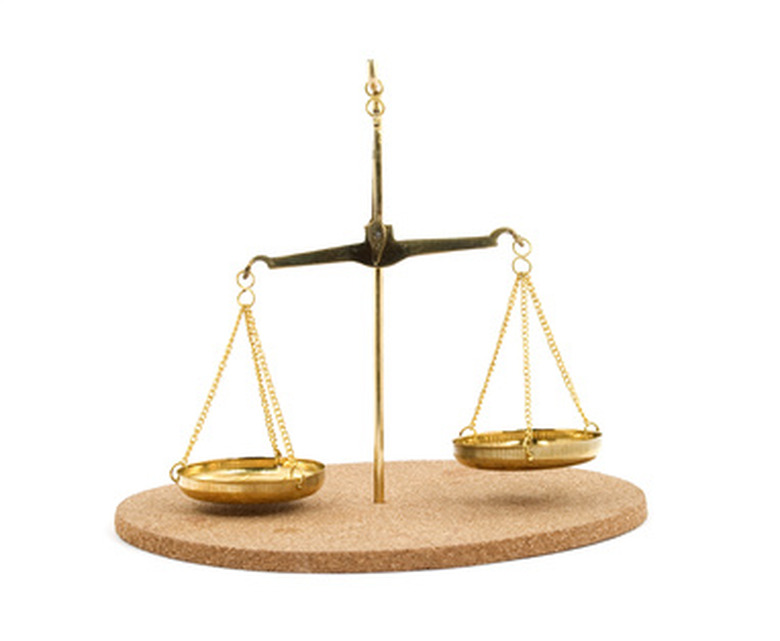How To Create A Justice Scale
The scales of justice are a familiar symbol that represents the "weighing" of two sides of an argument and the equal, unbiased administration of the law. A justice scale, or balance scale, consists of a horizontal beam that rests on a central pivot point, with platforms suspended at each end. You weigh an object by setting it on one platform and adding pre-measured counterweights to the other platform. The balance beam will be level when the counterweights weigh the same as the object you are weighing. You can construct a simple balance scale using household items.
Step 1
Trace two circles on the cardboard using the glass for a stencil. Cut the circles out to create the balance platforms. Use the pencil tip to poke three holes near the edge of each circle. The holes should be spaced evenly apart so they would form a triangle if you drew a line to connect them.
Step 2
Cut six pieces of string, each eight inches long. Tie a small loop onto one end of each string. Tie the other end of the string through a hole in the cardboard. Use the same amount of string for each knot so the strings remain the same length. You should now have two cardboard circles with a string tied through every hole, and a loop tied on the other end of the string.
Step 3
Put the loops of one set of strings through one end of an S-hook. Repeat with the other strings and S-hook. Set the S-hooks over the ends of a ruler. You now have a balance scale.
Step 4
Center the ruler on the back of a kitchen chair with the platforms suspended at each end. Adjust the ruler as needed until the balance beam is horizontal. Experiment by placing various objects on the platforms to compare weights.
Things Needed
- Cardboard
- Drinking glass
- Pencil
- Ruler
- Scissors
- String
- 2 S hooks (or O rings, large paper clips or alligator clips)
- Counterweights: Lightweight objects such as paper clips, safety pins, dried beans, elbow macaroni, pebbles
TL;DR (Too Long; Didn't Read)
Use a kitchen scale to measure objects to use as counterweights. If a dried bean weighs two grams, for example, you can determine the weight of a pebble by adding beans to the other end of the scale. When the ruler is level, the weight of the object will equal the total weight of the beans.
Warning
The beams on most balance scales are anchored to a pivot point. Since your scale rests freely on the back of the chair, you will need to hold it with one hand to keep it from falling until the weight is evenly distributed and the ruler can balance without assistance.
Cite This Article
MLA
Eigen, Donna. "How To Create A Justice Scale" sciencing.com, https://www.sciencing.com/create-justice-scale-7565365/. 24 April 2017.
APA
Eigen, Donna. (2017, April 24). How To Create A Justice Scale. sciencing.com. Retrieved from https://www.sciencing.com/create-justice-scale-7565365/
Chicago
Eigen, Donna. How To Create A Justice Scale last modified March 24, 2022. https://www.sciencing.com/create-justice-scale-7565365/
